Complete Solutions to Level - II of chapter Electricity of Class 7 book with complete answers and questions
| Class 7 | PHYSICS |
| Chapter | Electricity |
| PEARSON IIT JEE FOUNDATION | Level - II |
| Number Of Questions | 52 |
| Academic Year | 2023-24 |
Three batteries are connected as shown in the figure.
Then the total emf in the circuit is `"____"` V.
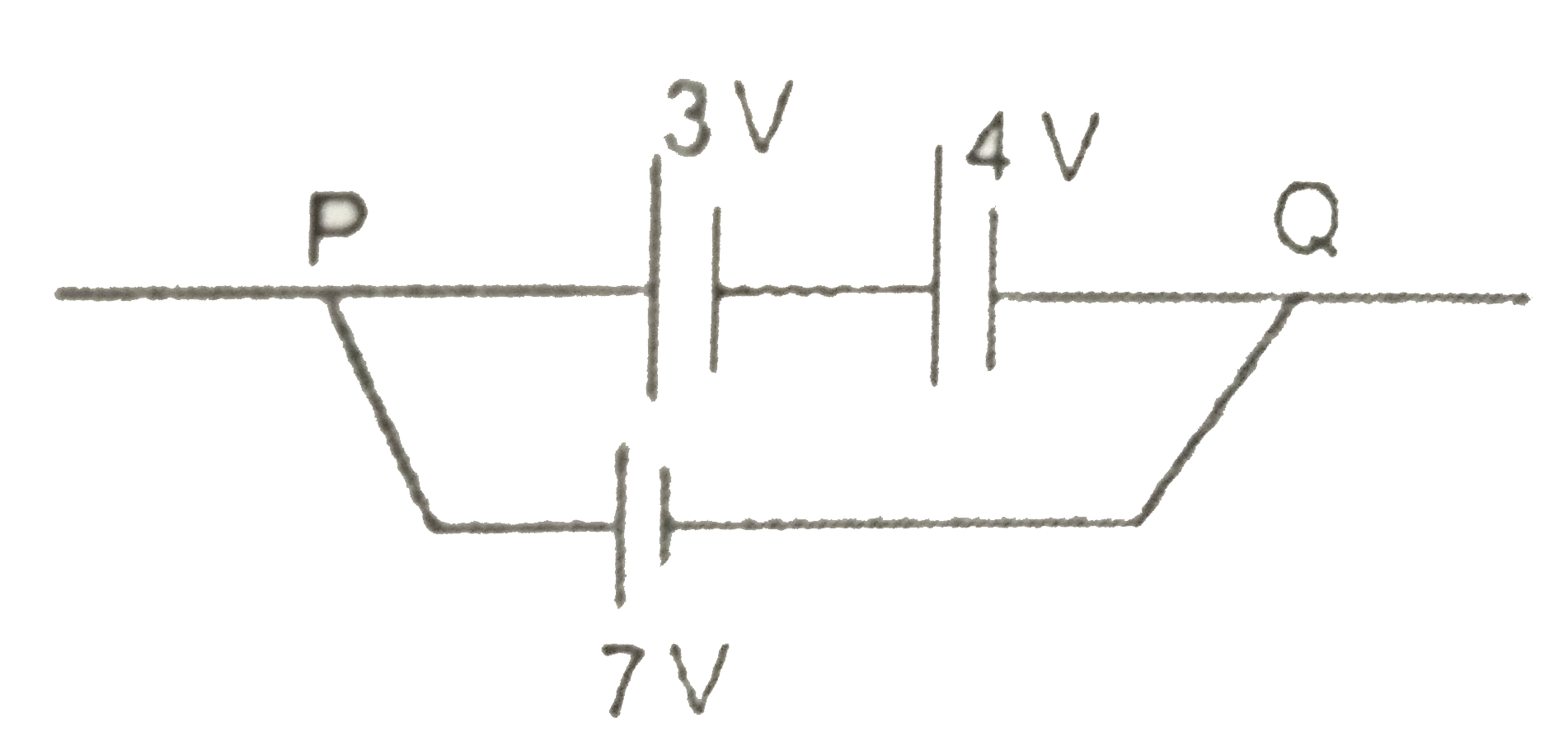 02:16View Solution
02:16View SolutionThree identical bulbs are connected as shown in fig-ure. Choose the correct statement.
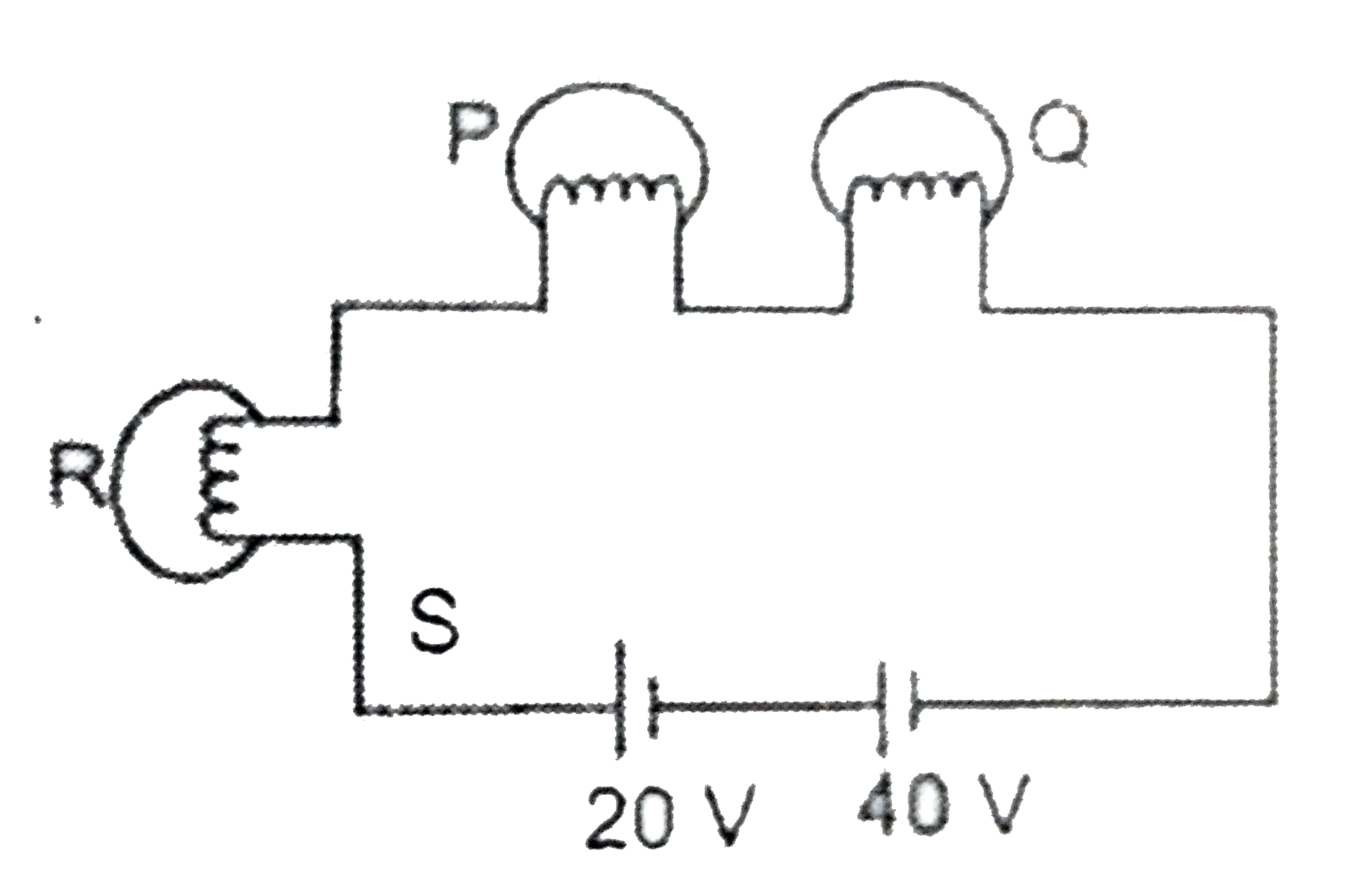 02:51View Solution
02:51View SolutionA positively charged body is brought in contact with the cap of gold leaf electroscope. Whose strips are netural , then
02:56View SolutionChoose the correct statement:
When the same current(i) flows through tow circuits as shown in the figures, then (assume that all bulbs are identical)
(A) bulbs in first combination glow with more brightness.
(B) bulbs in second combination glow with more brightness.
(C) bulbs in both the combination glow with equal brightness.
 02:21View Solution
02:21View SolutionWhat happens when a glass rod is rubbed against a silk cloth?
01:29View SolutionA magnet is brought close to a current carrying con-ductor as shown in figure, then
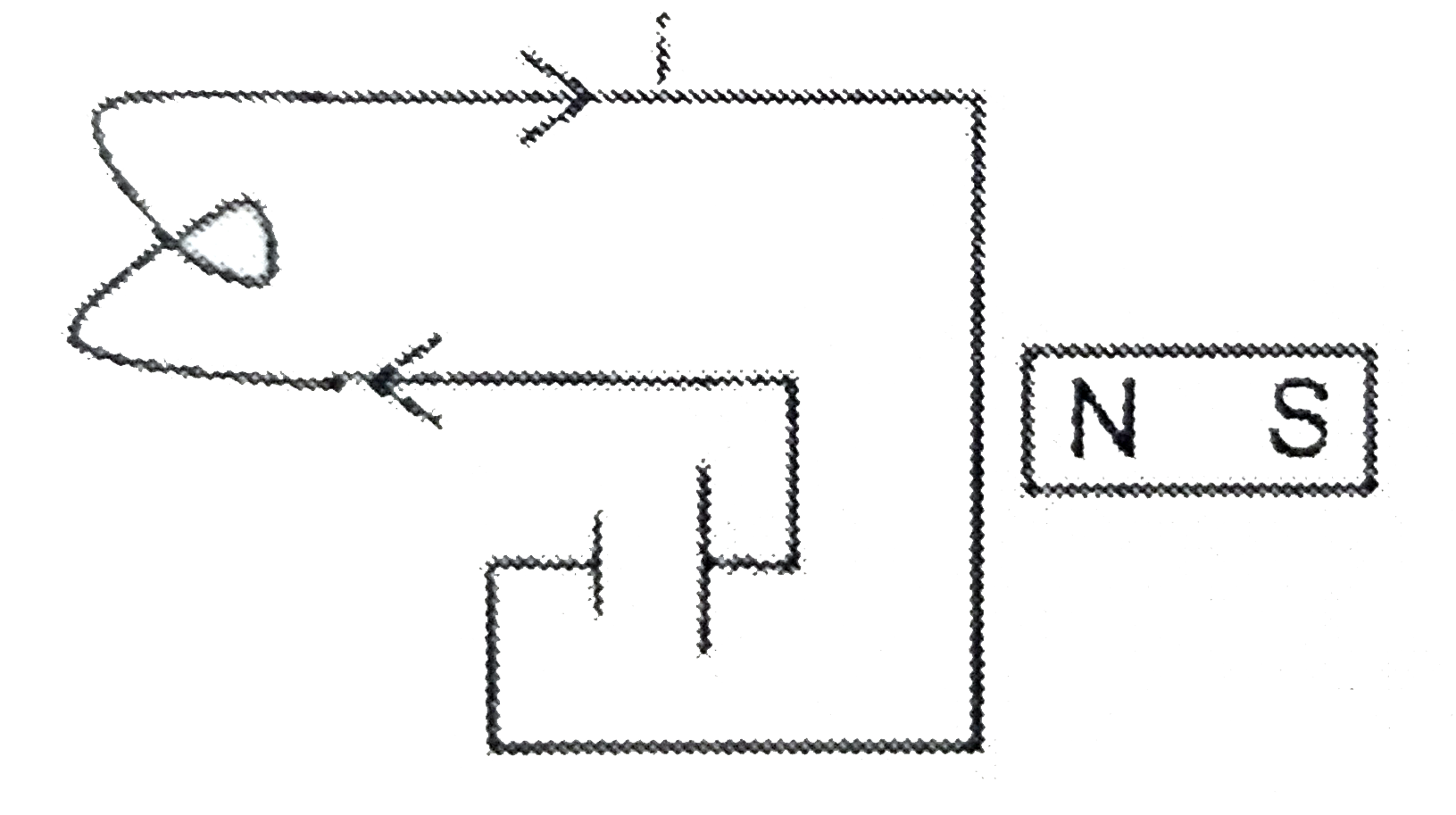 02:03View Solution
02:03View SolutionThree dry cells are connected as shown in the
 figure. If e.m.f of each cell is 2 V, then the e.m.f. of the combination is `"_____"` V.01:55View Solution
figure. If e.m.f of each cell is 2 V, then the e.m.f. of the combination is `"_____"` V.01:55View SolutionChoose the correct statement about the given circuit: Three identical bulbs are connected as shown in the figure.
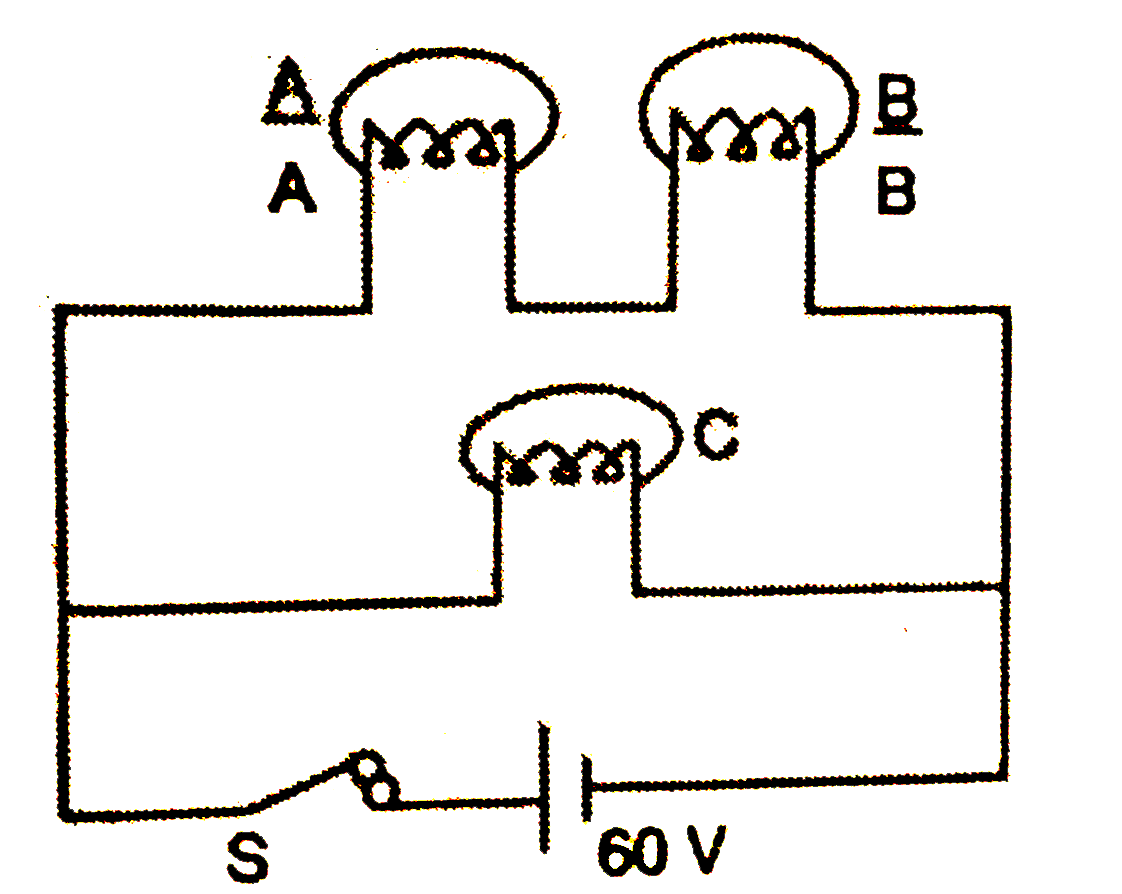 02:28View Solution
02:28View SolutionWhat will happen to the strips of a positively charged electroscope when a positively charged and another negtively charged bodies with equal magnitude of charge are brought simultaneously in contact with the cap of a positively charged electroscope?
02:37View SolutionWhen a neutral body is brought closer to a negatively charged body, then
03:05View SolutionWhat happens when a current carrying metallic comb is placed close to small iron filings?
02:49View Solution(a) Two charged bodies, A and B are suspended from a fixed point with the help of silk threads as shown in the figure. If A is positively charged can we identify the nature of charge on 'B' ?
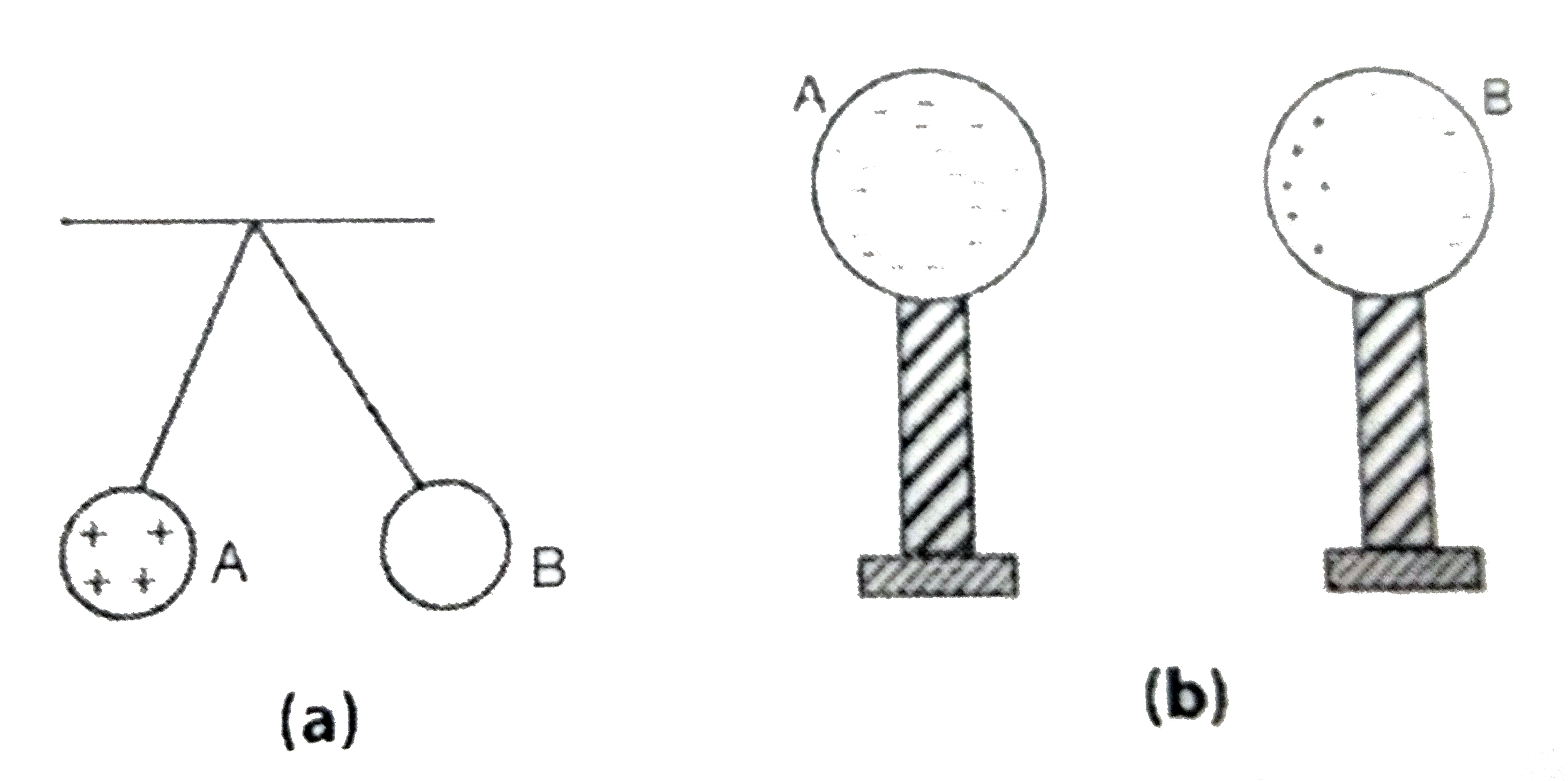
(b) A negatively charged conducting sphere A and a neutral sphere B are kepton insulating stands and brought cose to each other. The charge distri-bution is as shown in the figure.
Is B charged ? What type of force exists between A and B ?06:26View SolutionRaghavan found a metallic rod AB and a glass rod CD both positively charged and placed on an insulat-ing table. He wanted to know what would happen to the charges on AB and CD if he touched both the rod at A and C ? Discuss.
 04:26View Solution
04:26View SolutionTwo identical, small metallic shpheres A and B are placed side by side on an insultaing smooth table as shown in the figure. If A is positively charged and held fixed with the table , discuss the motion of B.
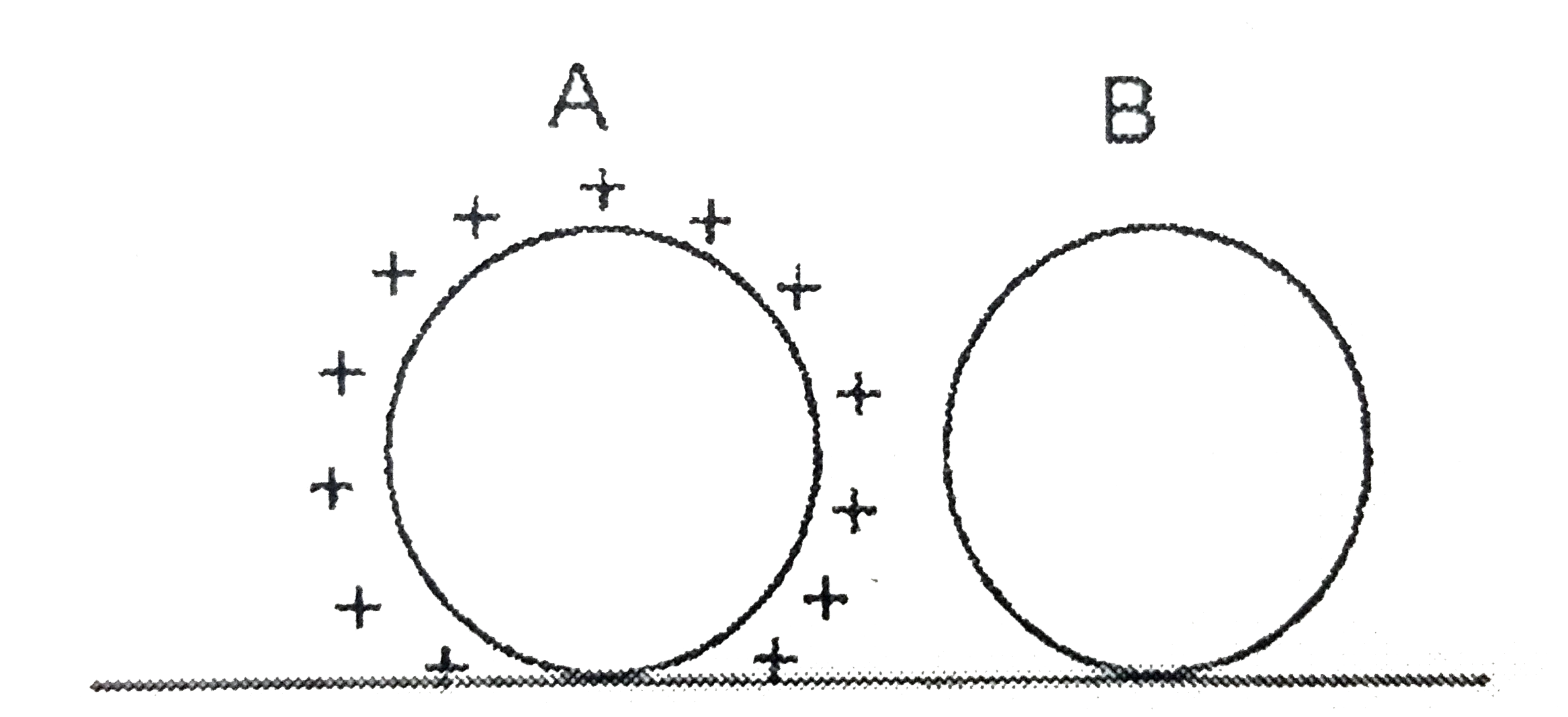 02:57View Solution
02:57View SolutionObserve the circuit and state whether the cells are connected in series or parallel. If each cell is of e.m.f. `1.5 V`, then find the total e.m.f applied across the bulb connected.
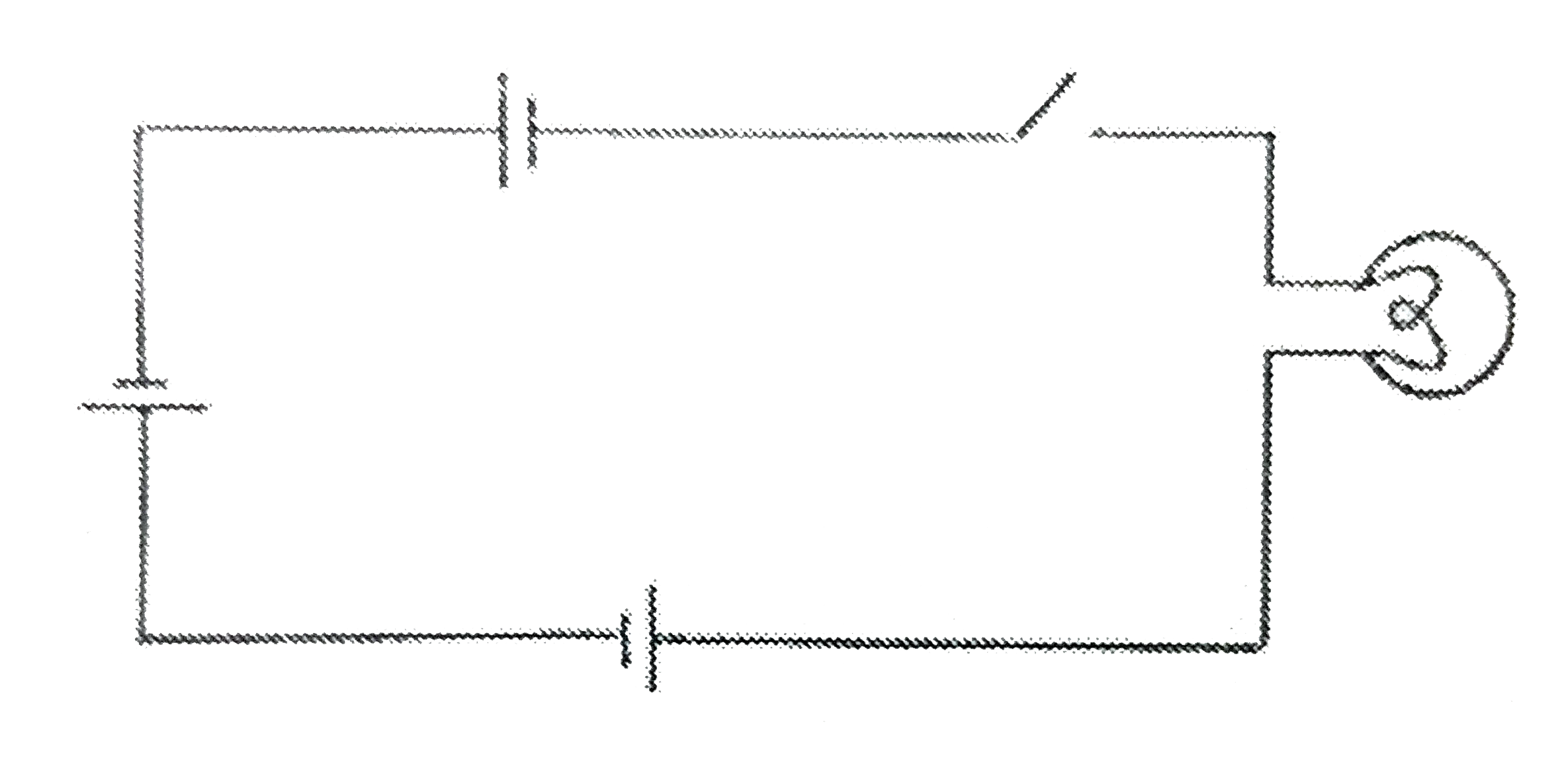 02:37View Solution
02:37View SolutionThree identical cells of e.m.f. `1.5 V` are given. Find how we can arrange them to get a total e.m.f. of
(a) `1.5 V`, (b) `3 V`, (c ) `4.5 V`.03:19View SolutionPrahar took two identical heating elements and con-nected them to a battery in two different ways as shown in the figure. When he switched ON the switch, is the heat developed in each element the same or different in both the cases ?
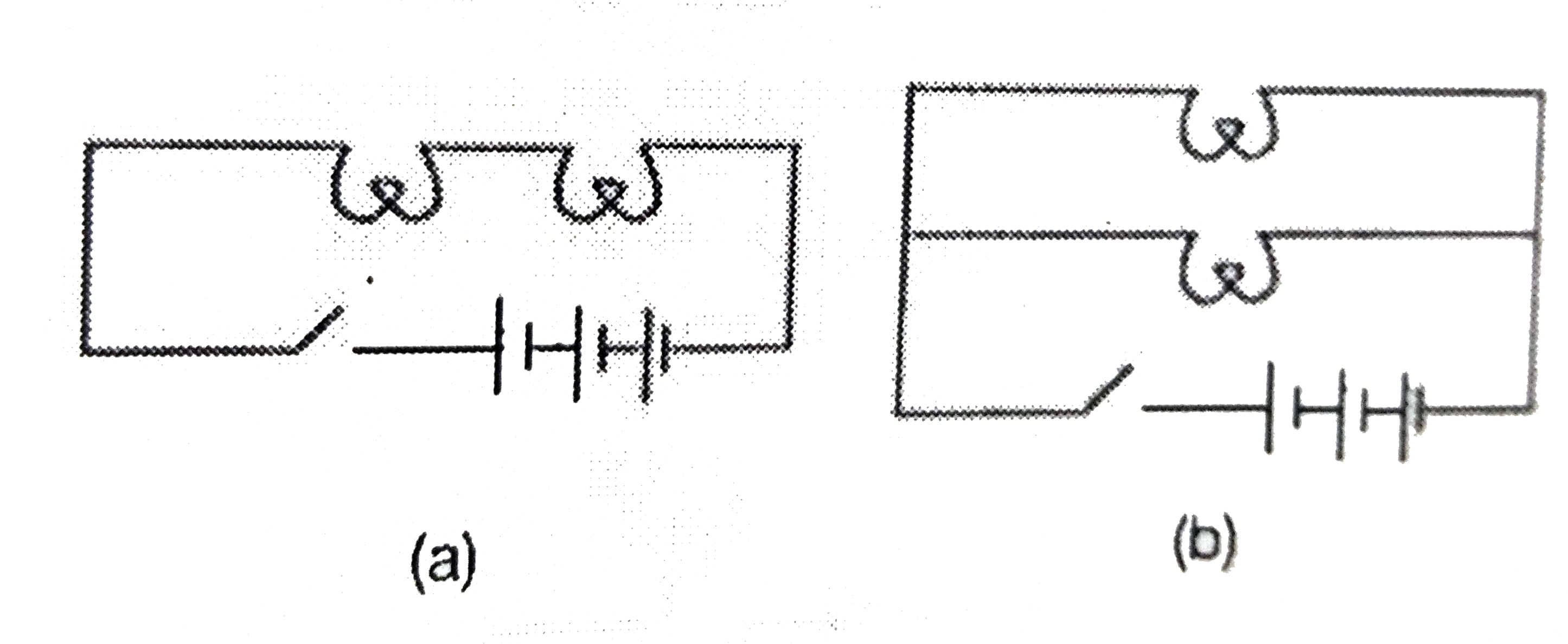 06:58View Solution
06:58View SolutionIdentify whether the following circuits are open or closed.
 03:16View Solution
03:16View SolutionWhat is the nature of materials used to make the 'filament' of an electric bulb and the 'fuse wire' used in electric fuse ? Compare them.
02:43View SolutionDefine live and neutral wires.
03:02View SolutionRepresent the connections shown below by a circuit diagram.
 02:46View Solution
02:46View SolutionWe observe the bulb glowing when the switch is 'ON'. Can we conculde that charges instantly move from the 'switch' to the bulb ? Discuss.
07:12View SolutionWhat is a depolarizer and how does it work ?
03:04View SolutionGourang made an electric circuit with three bulbs `B_(1), B_(2)` and `B_(3)` a cell and two switches `S_(1)` and `S_(2)` as shown in figure. He notes his observation when
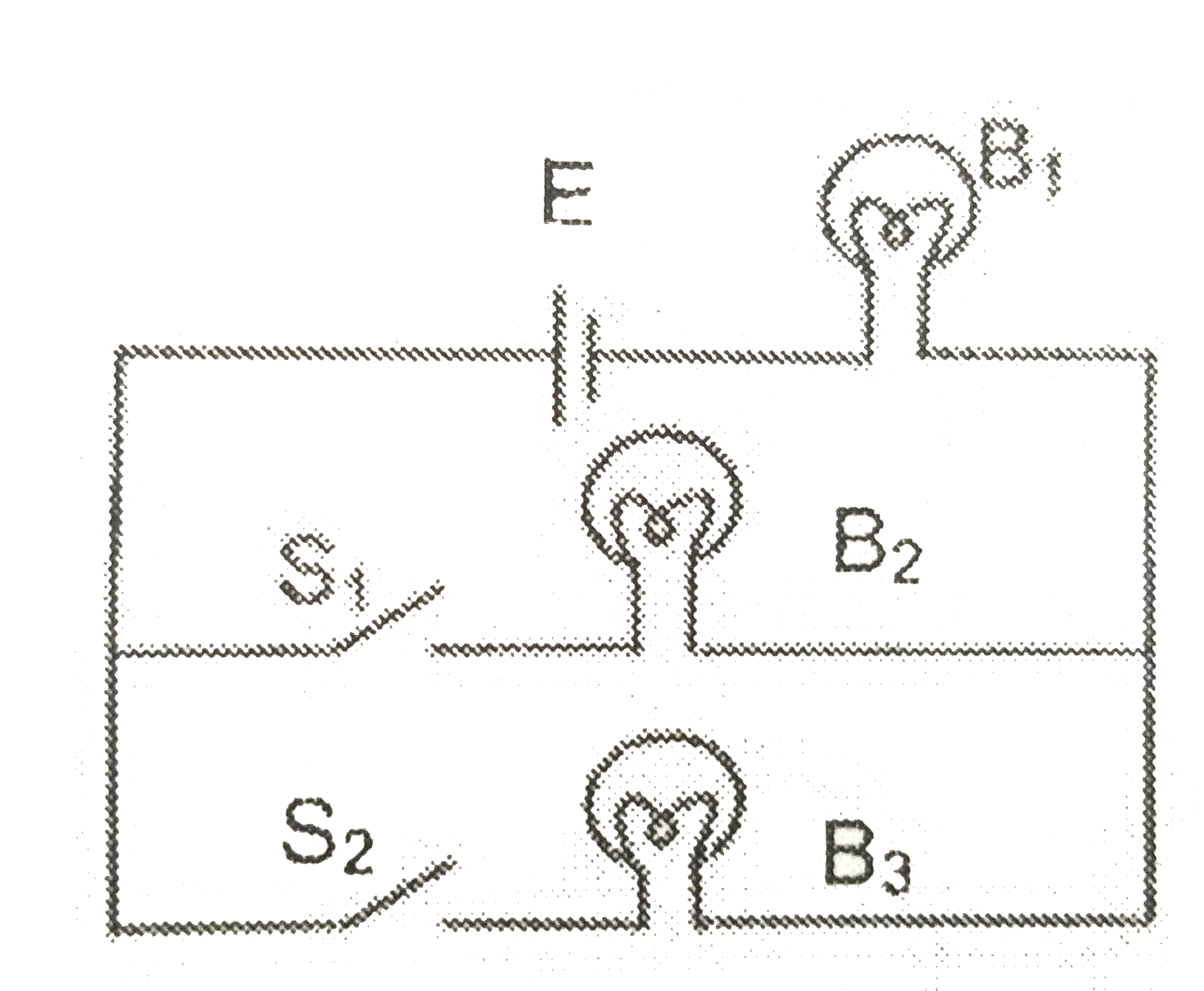
(a) `S_(1)` is closed and `S_(2)` is open,
(b) `S_(2)` is closed and `S_(1)` is open.
He also found that a bulb whose failure made the circuit 'open' irrespective of the status of `S_(1)` and `S_(2)` . What are his observation.07:53View SolutionSaket was repairing an electric bell. By mistake, instead of an electromagnet, he placed a permanent magnet in the electric bell. Explain, what changes do you observe.
05:17View SolutionRavinder was inspired by reading the autobiography of Thomas Alva Edison and changed a portion of his room into a laboratory. In his laboratory he per-formed and activity that demonstrates both 'heating effect' and 'magnetic effect' of electric current. He connected different components with different wires and the connections are represented by the following circuit diagram.
To his disappointment, he was not successful in his effort. Observe the circuit and suggest modifications to make his effort successful.
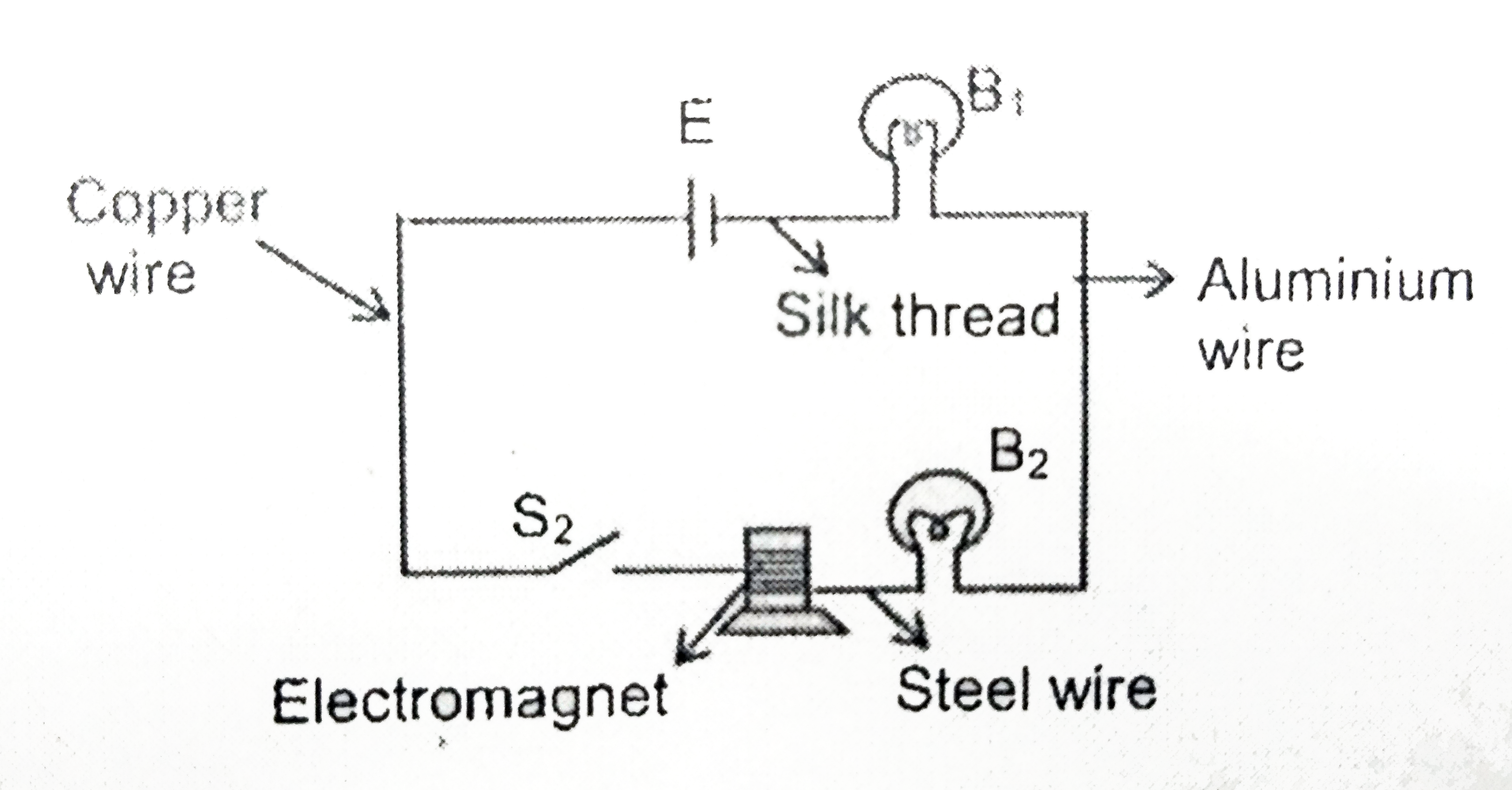 03:45View Solution
03:45View SolutionThree batteries are connected as shown in the figure.
Then the total emf in the circuit is `"____"` V.
 02:16View Solution
02:16View SolutionThree identical bulbs are connected as shown in fig-ure. Choose the correct statement.
 02:45View Solution
02:45View SolutionA positively charged body is brought in contact with the cap of gold leaf electroscope. Whose strips are netural , then
02:56View SolutionChoose the correct statement:
When the same current (i) flows through two circuits as shown in the figures then(assume that all bulbs are identical )
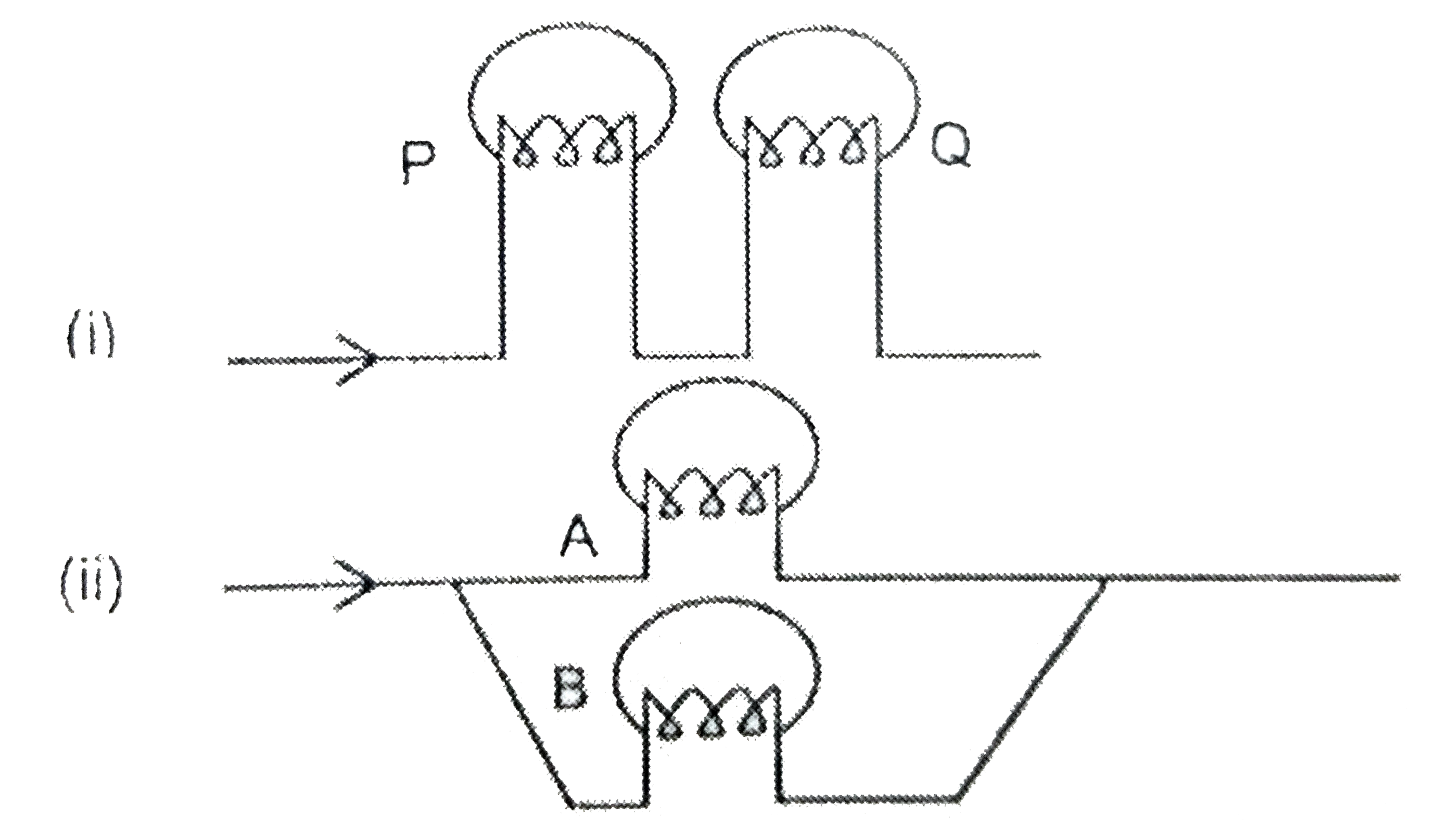 03:45View Solution
03:45View SolutionA glass rod is rubbed against a silk cloth, then
04:12View SolutionA magnet is brought close to a current carrying con-ductor as shown in figure, then
 02:03View Solution
02:03View SolutionThree dry cells are connected as shown in the
 figure. If e.m.f of each cell is 2 V, then the e.m.f. of the combination is `"_____"` V.01:55View Solution
figure. If e.m.f of each cell is 2 V, then the e.m.f. of the combination is `"_____"` V.01:55View SolutionChoose the correct statement about the given circuit: Three identical bulbs are connected as shown in the figure.
 02:28View Solution
02:28View SolutionWhen a positively charged and another negtively charged bodies with equal magnitude of charge are brought simultaneously in contact with the cap of a positively charged electroscope, then the strips
02:38View SolutionWhen a neutral body is brought closer to a negatively charged body, then
03:05View SolutionWhat happens when a current carrying metallic comb is placed close to small iron filings?
02:49View Solution(a) Two charged bodies, A and B are suspended from a fixed point with the help of silk threads as shown in the figure. If A is positively charged can we identify the nature of charge on 'B' ?

(b) A negatively charged conducting sphere A and a neutral sphere B are kepton insulating stands and brought cose to each other. The charge distri-bution is as shown in the figure.
Is B charged ? What type of force exists between A and B ?06:26View SolutionRaghavan found a metallic rod AB and a glass rod CD both positively charged and placed on an insulat-ing table. He wanted to know what would happen to the charges on AB and CD if he touched both the rod at A and C ? Discuss.
 04:26View Solution
04:26View SolutionTwo identical, small metallic shpheres A and B are placed side by side on an insultaing smooth table as shown in the figure. If A is positively charged and held fixed with the table , discuss the motion of B.
 02:57View Solution
02:57View SolutionObserve the circuit and state whether the cells are connected in series or parallel. If each cell is of e.m.f. `1.5 V`, then find the total e.m.f applied across the bulb connected.
 02:37View Solution
02:37View SolutionThree identical cells of e.m.f. `1.5 V` are given. Find how we can arrange them to get a total e.m.f. of
(a) `1.5 V`, (b) `3 V`, (c ) `4.5 V`.03:19View SolutionPrahar took two identical heating elements and con-nected them to a battery in two different ways as shown in the figure. When he switched ON the switch, is the heat developed in each element the same or different in both the cases ?
 06:58View Solution
06:58View SolutionIdentify whether the following circuits are open or closed.
 03:16View Solution
03:16View SolutionWhat is the nature of materials used to make the 'filament' of an electric bulb and the 'fuse wire' used in electric fuse ? Compare them.
02:43View SolutionWhat are the colours of live, neutral and earth wires?
01:23View SolutionRepresent the connections shown below by a circuit diagram.
 02:46View Solution
02:46View SolutionWe observe the bulb glowing when the switch is 'ON'. Can we conculde that charges instantly move from the 'switch' to the bulb ? Discuss.
07:12View SolutionWhat is a depolarizer and how does it work ?
03:04View SolutionGourang made an electric circuit with three bulbs `B_(1), B_(2)` and `B_(3)` a cell and two switches `S_(1)` and `S_(2)` as shown in figure. He notes his observation when

(a) `S_(1)` is closed and `S_(2)` is open,
(b) `S_(2)` is closed and `S_(1)` is open.
He also found that a bulb whose failure made the circuit 'open' irrespective of the status of `S_(1)` and `S_(2)` . What are his observation.07:53View SolutionSaket was repairing an electric bell. By mistake, instead of an electromagnet, he placed a permanent magnet in the electric bell. Explain, what changes do you observe.
05:17View SolutionRavinder was inspired by reading the autobiography of Thomas Alva Edison and changed a portion of his room into a laboratory. In his laboratory he per-formed and activity that demonstrates both 'heating effect' and 'magnetic effect' of electric current. He connected different components with different wires and the connections are represented by the following circuit diagram.
To his disappointment, he was not successful in his effort. Observe the circuit and suggest modifications to make his effort successful.
 03:45View Solution
03:45View Solution
Level - II questions and complete solutions for chapter Electricity of PEARSON IIT JEE FOUNDATION of Class 7
All Exercises from PEARSON IIT JEE FOUNDATION Class 7 PHYSICS Electricity
- Asessment Test - 1
- ASSESSMENT TEST (TEST-1)
- ASSESSMENT TEST (TEST-2)
- Concept Application
- CONCEPT APPLICATION (LEVEL-1)
- CONCEPT APPLICATION (LEVEL-2)
- CONCEPT APPLICATION (LEVEL-3)
- Essay Type Qns
- Example
- Level - I
- Level - II
- Level - III
- Short Type Qns
- Test 2
- TEST YOUR CONCEPTS ( ESSAY TYPE QUESTIONS)
- TEST YOUR CONCEPTS ( SHORT ANSWER TYPE QUESTIONS)
- TEST YOUR CONCEPTS (VERY SHORT ANSWER TYPE QUESTIONS)
- Very Short Answer
